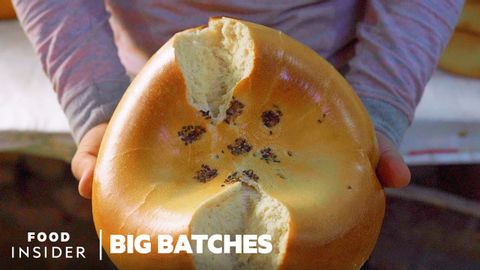ウズベキスタンで伝説のパン「サマルカンドパン」が毎日15,000個焼かれる理由|Big Batches (How 15,000 Legendary Samarkand Bread Loaves Are Baked Daily In Uzbekistan | Big Batches)
林宜悉 が 2022 年 06 月 08 日 に投稿  この条件に一致する単語はありません
この条件に一致する単語はありません- v.t./i.突き刺す : 刺し込む;貼る : くっつける;とどまる;突き出す;我慢する
- n. (c.)棒
US /ˈækjərɪt/
・
UK /ˈækjərət/
US /dɪˈstɪŋkt/
・
UK /dɪˈstɪŋkt/
- adj.決別した;割れた;対立の
- v.t./i.真っ直ぐに切って分けられる;割れる;対立する;分割する;公平に分ける
- n. (c./u.)対立;分離
エネルギーを使用
すべての単語を解除
発音・解説・フィルター機能を解除
